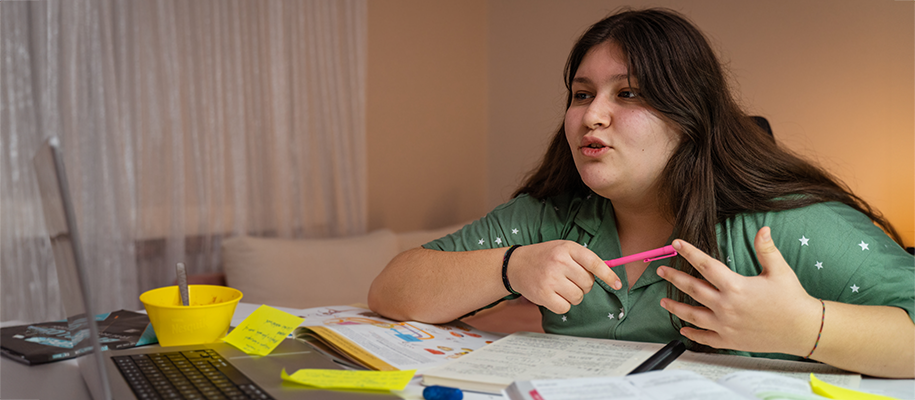Students continue to discover the flexibility and convenience associated with online learning—including finding programs, resources, and classes that perfectly align with their learning goals and busy lifestyles. Online platforms designed to provide online courses, virtual universities, and degree programs that target adult learners have vastly increased over the past decade. With multiple platforms in place, it’s become easier to go online and take the courses you want. One of the most beneficial tools at your disposal are online video lectures, and here’s why.
Why video lectures are an effective learning tool
Some online learning programs provide live interactive videos where students can learn, ask questions, respond, and discuss course material. There are so many schools, websites, and other resources that offer great video learning tools. For example, if you want to equip yourself with medical knowledge, you can visit Lecturio, one of the most comprehensive and extensive medical forums on the internet. If you wish to learn foreign languages, many websites offer online courses for personal or professional purposes. Lingoda is one of the best platforms for language courses since it’s fully equipped to offer full courses on multiple languages, which makes the learning process easy, efficient, and fast. Whatever the subject, here’s why video lectures are considered to be more practical:
Increased learning retention
A study performed by the SAVO group revealed the average employee can only remember 35% of what they learn a week after a training course ends—and merely 10% after six months. In another research study where visuals were incorporated into the training, it was found employees could remember 65% six months post-training. This research was carried out to assert that video courses ensure that a learner remembers the details long-term.
Student-centered learning
Student-centered learning is a method that puts students first rather than the lecturers themselves. Online learning utilizes peer grading systems and student discussion boards, which is why it’s considered fundamentally student centric. This format refocuses your learning back to you and your peers to help shape it.
Increased learner engagement
Forrester Research administered a survey that deduced 75% of students learn more from watching a recorded video lecture rather than taking their time to read through overly detailed print materials. Due to their attractive and engaging nature, videos are fashioned to demand the concentration that classroom lectures and static text documents simply can’t.
Emphasized digital literacy
It’s important that students don’t see digital literacy and school as distinct entities. Instead, they should be considered as conjoined factors of education. In the 21st century, digital literacy is a significant skill that’s required for almost every job. The more students are exposed to digital literacy in school, the more proficient and confident they become. Students who record, edit, and present videos gain valuable skills. When combined with the appropriate equipment, video lectures are very effective; however, a slow connection or the wrong screen can lessen the impact of a video.
More availability
The provision of video lecture content enables students to access course materials outside the classroom and on a flexible schedule that works for them. Since video lectures can be archived and saved, students can easily refer to the materials as a study tool anytime.
Related: Dual Enrollment: Are Online or In-Person Classes Better for You?
3 types of e-learning videos
Knowing that videos come in a variety of formats, it’s important to be mindful of the ones that are best suited for your learning. They include:
1. YouTube videos
Many different YouTube channels offer videos courses that allow students to learn at their own pace. Given YouTube's versatility, videos can come in the form of recorded lectures, webinars, e-learning courses, and presentations, and learners can utilize them all to study a subject more in-depth. Through video visuals, students can familiarize themselves with the aspects of a course or subject and get the most out of it. If you’re looking to combine interactive learning materials and videos into e-learning, YouTube might be the ideal solution.
2. Recorded video lectures
Video lectures are usually pre-recorded presentations that focus on a specific subject—and they’re often produced by colleges and universities. They’re structured as classroom lectures or images, slides, charts, and text with voiceovers. This way, it’s possible to teach complex topics in logical and systematic procedures. Applications like Coursera offer video course content as a way of administering lectures.
3. Live video courses
Live courses are synchronous videos that are recorded in real-time, as opposed to pre-recorded courses. They allow you to interact with other students and even the lecturer through chats and comments, making learning twice as dynamic.
Related: How to Make Online Learning Work Better for You
Practices to help you learn more online
Some students struggle with the independence of online learning as opposed to sitting in a physical classroom. Here’s what you can do to create the right setting and stay on track with your virtual studies.
Create a dedicated study space
Having a dedicated workspace makes learning more effective since it’s easier to remember information when you’re in the same place where you learned it. A well set-up learning space should be away from your sofa or bed, and it should be clear of all plausible distractions. This will help increase your focus.
Schedule time to study on your calendar
Setting aside time to complete your assignments and watch lectures is essential. This helps you manage your daily activities and leaves enough time for studying without cramming, resulting in less stress and struggles for you throughout your online courses.
Do one thing at a time
To facilitate effective learning, you should single out activities and do one task at a time. This way, you’ll be able to complete assignments and absorb more information with greater productivity than you would if you were multitasking.
Related: Video: Adjusting to Online Learning
What’s next in e-learning?
As education's instructional design continues to evolve alongside technological advances, types of e-learning will certainly advance as well. For instance, several educators anticipate that virtual and augmented reality will completely modify students' learning by inundating them with simulations and actual experiences. Moreover, experts agree that online video lectures are one of the most effective and engaging teaching methods and will continue to be for years to come. Having them as part of your curriculum will only facilitate an improvement in your academic success—so don’t skip the videos when you sign up for online classes!
Did you know you can learn a ton about college on the CollegeXpress YouTube channel? Start by learning How to Use CollegeXpress with this playlist!





